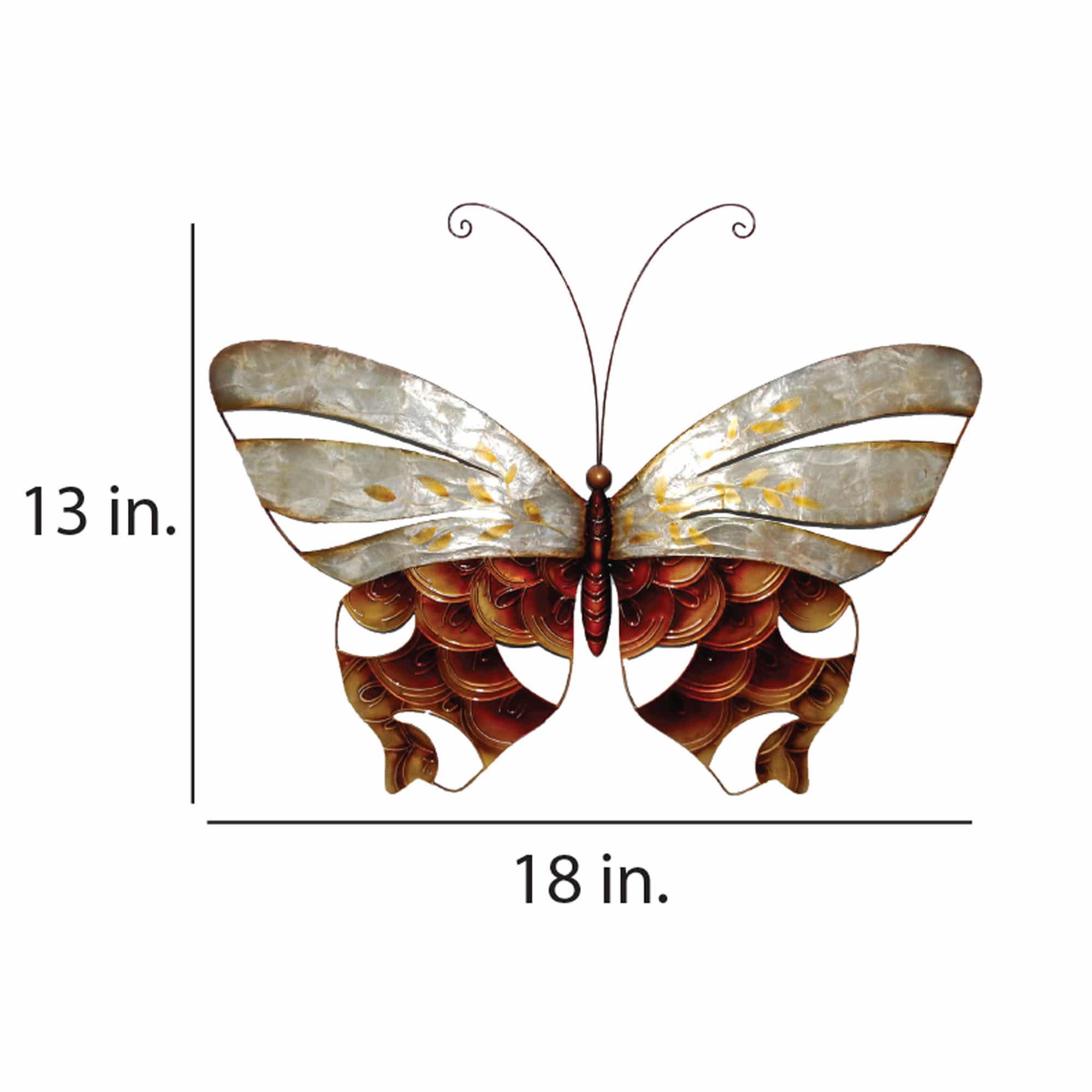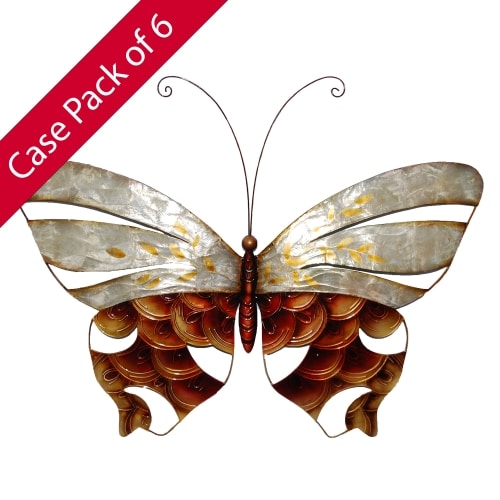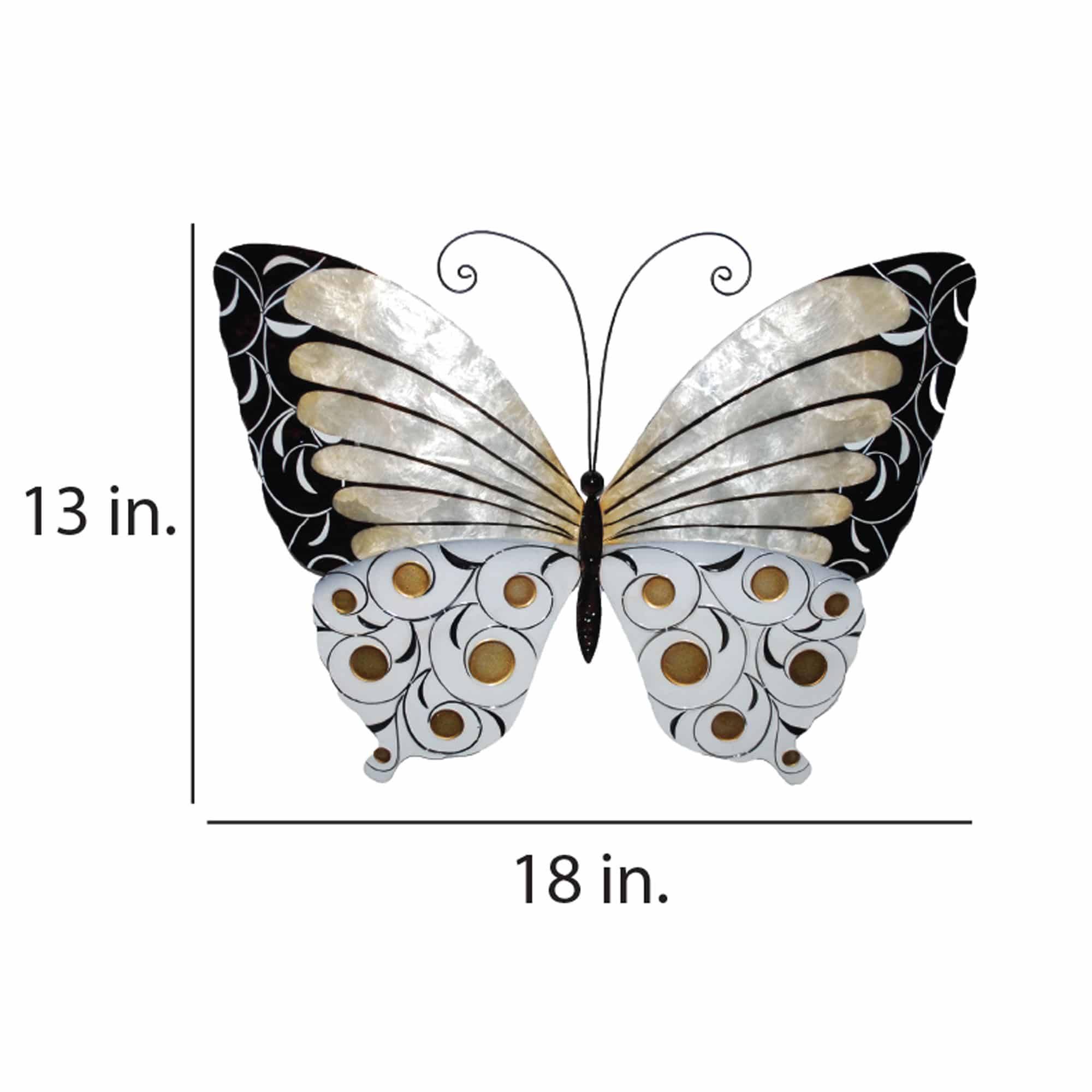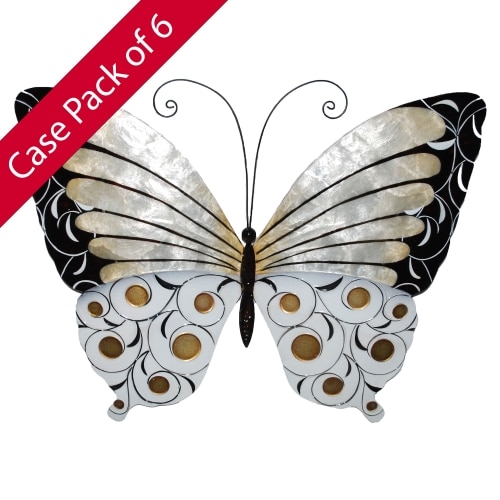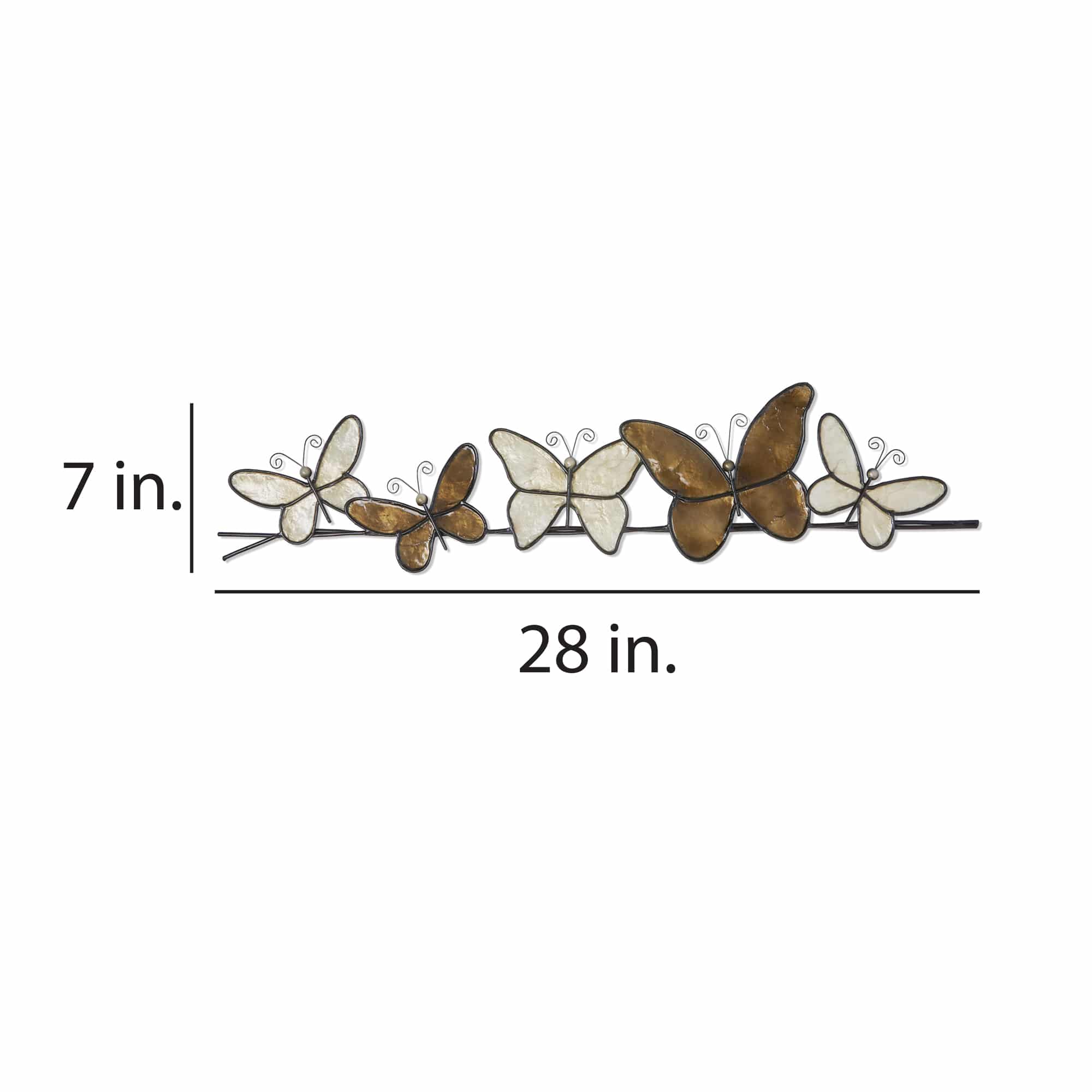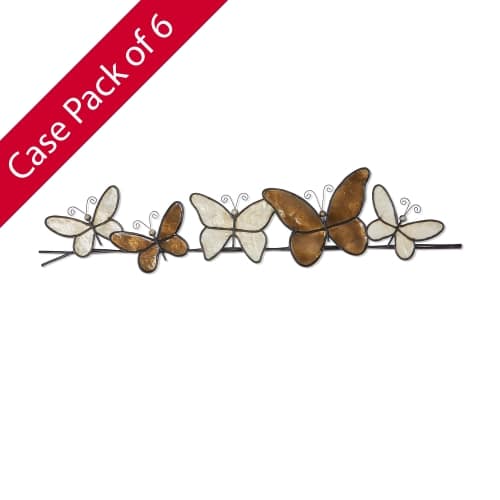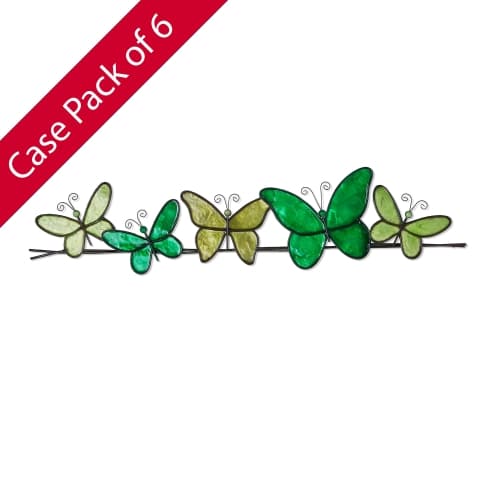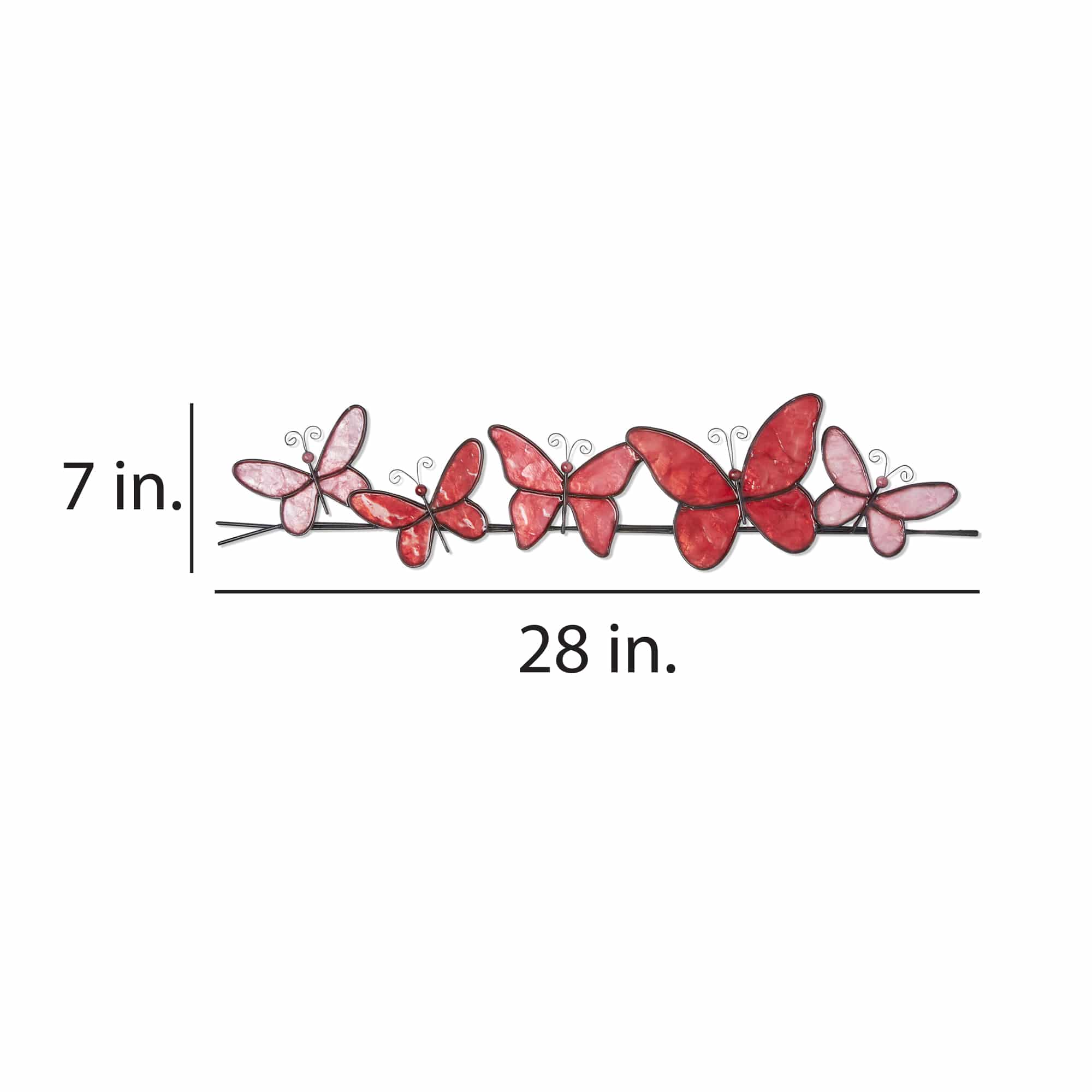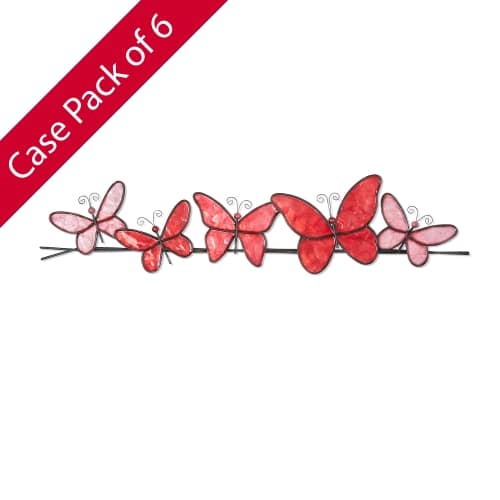With contrasting designs and textures, the artist captures the light and airy spirit of the ever-popular butterfly. Subtle hints of yellow design rest on top of natural capiz shell. Architecturally the arches are used to help support a structure, while creating an open area underneath it. Arches are used around the world and have become a symbol of strength. The lower wings feature a pattern of almost three-dimensional arches, symbolic to the strength a butterfly can represent.
The basic frame of the butterfly is created using tin, which is powder-coated with a black finish and makes this piece safe to use outdoors. The edges of the frame are reinforced using thicker tin wire. The front of this piece is adorned in areas with capiz shell, an oyster native to the Philippines, before being hand-painted and sealed with a water-based sealant. The primary purpose of this oyster to provide a source of food, however, the shell is a sustainable by-product that can be used for decoration. The capiz shell subtly replicates the reflective qualities of butterflies in nature. The entire piece is lightweight and has an eyelet in the back allowing it to be hung using a finishing nail, command strip, or a push pin. Due to it being a natural material, the organic colors of capiz come through as tans and browns underneath the paint.
